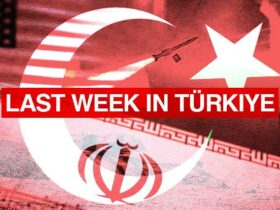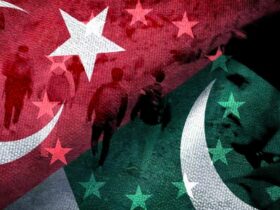The coronavirus epidemic has now spread to all regions of the world and South Asia is no exception. Moreover, given the high population density and the problems with these countries’ healthcare systems, the region may be “a time bomb waiting to explode”.
Pakistan: the new epicenter?
In Pakistan, 991 cases of coronavirus infection have already been detected, 7 of which ended in death. On March 23, the Pakistani government sent the army to help fight the spread of coronavirus in the country. The document authorizes the deployment of armed forces in all provinces of Pakistan including the capital. All schools and institutions were closed down two weeks ago.
However, unlike neighboring Iran and the Gulf states, Pakistan has not banned public meetings in mosques. Muslim clerics (except the Shia) vehemently oppose the possibility of closing religious gatherings.
https://twitter.com/SAMRIReports/status/1239336926471172108?s=20
In mid-March, the Tableeghi Jamaat sect held a meeting in Lahore which was attended by 250,000 people from different corners of the world. After meetings, they then traveled back to their home countries, despite the risk. It is likely telling that two participants from the Gaza Strip who attended the meeting returned home infected with the coronavirus.
Two Palestinian men in Gaza who contracted the corona virus were in Pakistan, where they attended a conference of tens of thousands of Muslim preachers outside of Lahore in March, according to a Palestinian diplomat.
— Diaa Hadid ضياء حديد (@diaahadid) March 23, 2020
Analysts point out that Islamic radicals could create a dangerous environment for the spread of coronavirus in the country. That, along with the country’s other problems, such as citizens’ reluctance to tolerate social distancing (on top of medical and sanitation problems common for all South Asian countries) could lead Pakistan “to become the next epicenter of the coronavirus crisis.”
The coronavirus could also seriously hit the economy. According to experts, the country can expect 12.3 million to 18.53 million layoffs.
India: quarantine and sticks
In India, the number of people officially infected with coronavirus is lower than in Pakistan. On Мarch 25, 562 people fell ill in a country with a population of more than 1 billion people. However, India’s government has been tougher than Pakistan’s. On March 24, Prime Minister Narendra Моdi said that the country, with a population of one billion people, will go into total isolation for 21 days.
The Prime Minister has banned citizens from leaving their homes. The only exceptions are for police, medics, firefighters and civil servants, telecommunications and postal services, journalists and the online sale of food and medicine.
Violators are driven back by the police with sticks and forced to exercise in the street.
https://twitter.com/gurpreetdhillon/status/1242486015308300288?s=20
However, the experts fear that, due to the lack of discipline of the population, these measures will be insufficient. Y.T. Boon, director of Asia research for Neuberger Berman in Hong Kong, says that he is “more worried about India now than anything else in Asia.”
India’s problems included its crowded cities and slums, low quality health care and sanitation, and the fact that despite its economic power, the country is poorer than China and far less organized. There are fears that the coronavirus will develop in India along the lines of the Italian scenario – by April, the health system will be overwhelmed. For a country of over billion people, this would mean tens of thousands of deaths at least.
According to experts from the University of Michigan, up to 250,000 people in India may fall ill by the end of April. By June, the number will be between 3 and 6 million. According to other estimates, up to 300 million people in India may fall sick with coronavirus.
Therefore, the country needs international assistance, and above all, assistance from China, especially drugs and technology to combat the spread of the disease.
The country is acutely aware of the prospect of economic recession. Shumita Deveshwar, an India analyst for TS Lombard said in an interview with Forbes that “our concern is that India doesn’t have the infrastructure to deal with the health problem or the socio-economic challenge of a country in lockdown.
Bangladesh: the Rohingya are at risk
Bangladesh has the same problems as India and Pakistan, threatening the spread of the disease in the country. The Ministry of Health of Bangladesh warns that the disease is spreading quite rapidly.
Bangladesh went into a nationwide lockdown on March 24. Authorities declared a ban on passenger travel via water, rail and domestic flights, while all public transportation was suspended on March 26.
However, the number of confirmed COVID-19 cases in Bangladesh is lower than in India and Pakistan. On March 26, there were only 40 cases (4 of them became ill on that day, but 5 recovered and five died.
There are fears that the textile industry in Bangladesh, which is one of the main sources of the country’s export earnings, may take a serious blow from the coronavirus and the measures that are being introduced to limit its spread.
The most vulnerable segments of the population are the most at risk. Thus, in the Rohingya refugee camps which are located on the territory of Bangladesh, there is widespread panic. In these overcrowded camps sanitation is seriously lacking, threatening to make them hotbeds of disease.
Given that Bangladesh is both one of the poorest countries in the world and a country with one of the highest population densities, the conditions for the spread of the coronavirus are very favorable.
Sri Lanka: Chinese aid
In Sri Lanka, 102 people have been diagnosed with coronavirus, although no new cases were seen on March 26.
To combat the spread of the virus, the government of Sri Lanka received a $500 million loan from China. The country relies primarily on China’s assistance. Most of those infected had recently returned to the country from abroad, mainly from Italy and South Korea.
Experts note that compared to other South-Asian countries, Sri Lanka is relatively prepared for the COVID-19 outbreak, with 2.38 ICU beds per 100,000 people.
A week ago, the Government imposed a national curfew which was extended this week.
Nepal, Bhutan and the Maldives: limited distribution
In Nepal, only two cases of coronavirus have been confirmed, the same amount which has been detected in Bhutan. However, these are only the confirmed cases. The Himalayan countries closed their border with India on Monday March 23 to prevent the coronavirus from spreading. People from over 160 countries, most of them from Europe, Australia, New Zealand, are stuck in Nepal because of measures imposed by the government.
Despite a small number of cases on March 24, the country went into full lockdown. All international and domestic flights have been canceled. Meanwhile, Bhutan has not yet imposed a quarantine. Prime Minister Dr Lotay Tshering said that the country is prepared for the closure of the border with India. The government has been stocking fuel and essential food items to last for at least 12 days.
The Maldives have only experienced 13 confirmed cases of COVID-19. On March 25, President Ibrahim Mohamed Solih declared a state lockdown and told the public that all on-arrival visas would be cancelled early on March 27, 2020. Government offices, schools and universities will be closed until April 5. However, even before that, the population listened to the recommendations of the authorities and avoided going out onto the streets. The government declared a health emergency on March 12 for 30 days.
Hats off #Maldives No Lockdown, No Curfew yet people respect the government announcement to stay at home. #StaySafe #Covid_19 #COVID19 #CoronaCrisis #coronavirus pic.twitter.com/9iXrmwde2l
— Fawzan (@fawzieUL) March 20, 2020
The first cases of coronavirus occurred in the country through contact with an Italian tourist. Tourists’ access to the country has since been suspended. However, this may have a negative impact on the economy of the country, which is heavily dependent on tourism.
Given the overpopulation and sanitary condition of the region, we can expect a large-scale outbreak of coronavirus in South Asia, which in the near future may become the epicenter of the disease. The virus poses the greatest threat to the lower strata of the population: refugees, migrants, lower castes and slum dwellers.
A large proportion of those infected in these environments may simply not be counted in the medical statistics of these countries. If coronavirus is spread all over the world for a long time, from 1 to 3 million people may die from it, mainly, of course, in densely populated and poorly provided for modern medicines such as Bangladesh, Nigeria, Indonesia.
Thus the help from the international community, first of all China, which successfully has overcome its own epidemic will be needed. This will require a significant change in the geopolitical approach, first of all by the Indian leadership, oriented towards an alliance with the US against China. However, the U.S. cannot now cope with the epidemic in its own country and does not intend to provide serious assistance to others. There are no alternatives to assistance from China. Another option is to fight the coronavirus in the framework of regional alliances. India and Pakistan, for example, could turn to Shanghai Cooperation Organization mechanisms.

















Leave a Reply